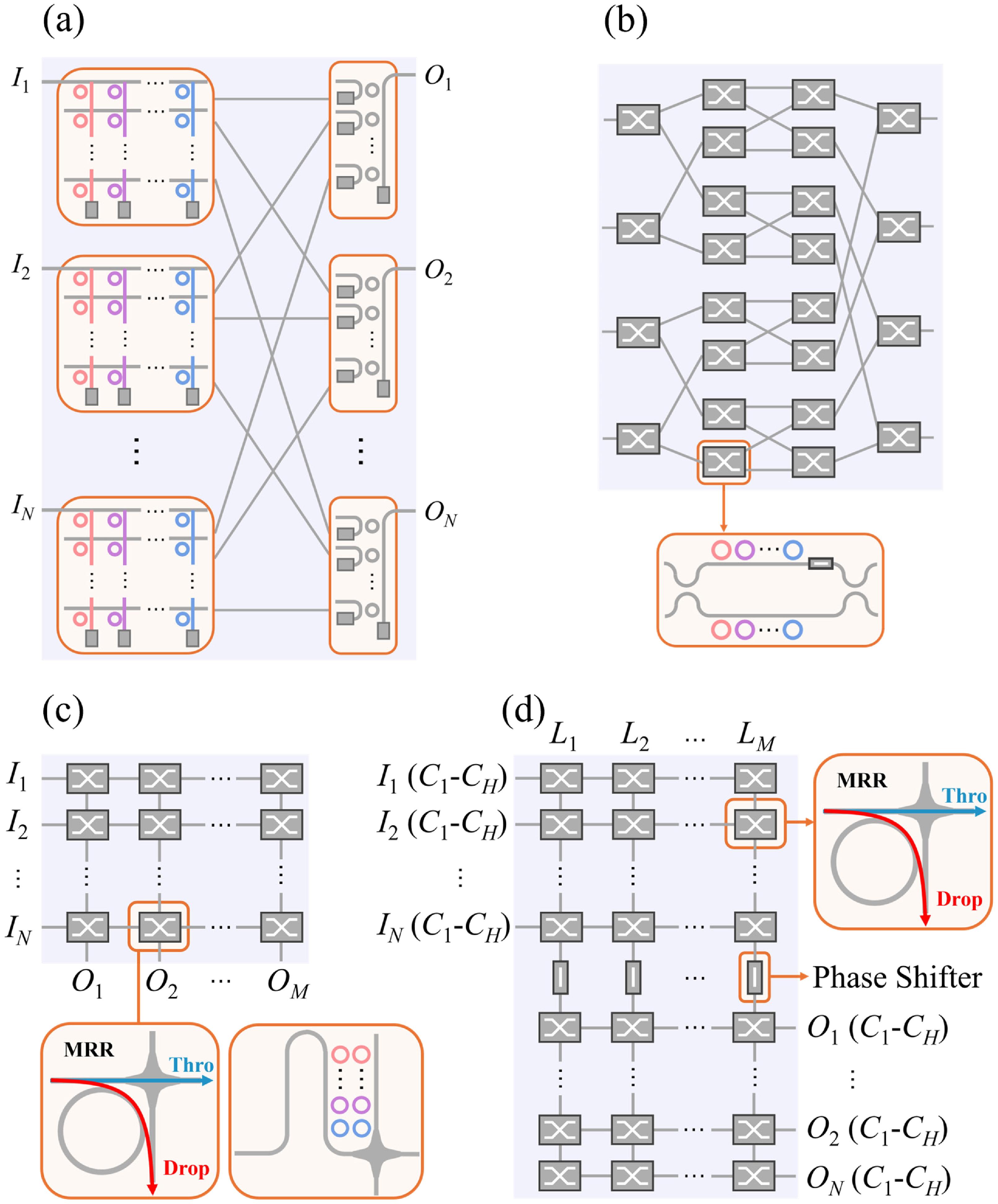Ziyao Zhang, Minjia Chen, Rui Ma, Bohao Sun, Adrian Wonfor, Richard Penty, Qixiang Cheng, "Dilated space-and-wavelength selective crosspoint optical switch," Photonics Res. 13, 924 (2025)
Search by keywords or author
- Photonics Research
- Vol. 13, Issue 4, 924 (2025)

Fig. 1. Diagrams of the SWSS topologies. (a) Switch and selective SWSS featuring MRR-based wavelength selectors. (b) Dilated Banyan topology with MRRs assisted MZI as switching elements. (c) Traditional crossbar topology and (d) dilated crosspoint topology proposed in this work.

Fig. 2. An example of crosstalk increased by interference.
Fig. 3. Permutation number and effective switching states as functions of port number N S e > P N − H
Fig. 4. Flow chart of the blocking status calculation process.
Fig. 5. Switching element number as a function of the port number N
Fig. 6. Design space exploration of the MRR. (a) Contour of the 3 dB bandwidth versus MRR radius and κ 2 κ 2
Fig. 7. (a) Schematic of the 4 × 4 × 4 λ I 1 O 1 , O 2 O 3 O 2
Fig. 8. (a) Microscope photograph of the dilated crossbar optical switch. (b) Photograph of the photonic chip with wire bonding and optical coupling with ultra-high-numerical-aperture (UHNA) fiber array.
Fig. 9. Diagram of the SWSS testing setup.
Fig. 10. Measured spectra of routing path from I 4 O 1
Fig. 11. Measured optical power map of the optical switch for four wavelength channels.
Fig. 12. The crosstalk ratios for all routing paths with leakage to all non-target output ports. The four wavelength channels are represented by distinct colors.
Fig. 13. The superimposed spectrum of all routing permutations across four channels. Each sub-figure illustrates all 16 possible permutations within each wavelength channel.
Fig. 14. Reconfiguration time of the SWSS.
Fig. 15. Diagrams of the switching states.
|
Table 1. Wide-Sense Non-blocking Condition for Dilated Crosspoint Topology with Different Port Numbers
|
Table 2. Figures of Merit for Various Reported SWSS Topologiesa
|
Table 3. Performance Comparison with Other Reported Integrated Switches

Set citation alerts for the article
Please enter your email address



